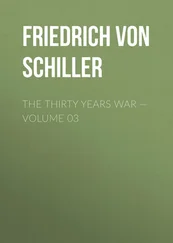After dinner we look about the town. All is monotonous and sombre. The houses, mostly of one story, form a continuous wall along the street—or along the sidewalk, if there be one—and their projecting, heavily barred windows, in front of which the young fellows have to do their courting, suggest prisons more than homes. Now we come to the massive, crumbling, gloomy church, and wonder where the priest keeps the family which everybody knows he has. Here is the government house, and we stop to picture the wily politicians, who—with noble exceptions—obtain the offices of local grandeur, and the little horde of clerks, many of them rendered prematurely decrepit by their vices, that fawn but cannot be made to work at the nod of authority. In vain we look for a book-store, though somewhere that name doubtless appears on a sign; but we do find the office of the comandante general, an officer who represents the central power, has charge of the military, and often is mining and counter-mining in a sharp struggle with the governor. How intolerably dull it must be to live here! Business of a large sort there is none. The little newspapers are scarcely more than echoes from partisan sheets at Mexico. Religion is a subject that one must let alone, and education a subject that it is useless to discuss. Of science, history, art, nothing is known. The small men in power brook no criticism except from enemies. Affairs in other states, even a famine or a flood, excite little interest. Not much is left except petty intriguing and the gratification of coarse appetites. A revolution is about the only possible escape from this more deadly ennui.8
Our second day shall be given to the metropolis. The suburbs of Mexico are mostly ragged and unclean, but some broad avenues lined with fine trees run through them, and entering the city by one of these we make our way to the great central plaza. On the eastern side of this extends the palace, a very long two-storied building of little distinction, and on the northern side towers the huge cathedral, quite in the grand, heavy, Spanish style, seamed with earthquake scars and pockmarked by revolutionary bullets. It is a Sunday morning and still rather early, but the plaza is alive. The usual nightly crop of dead and wounded is being carried to the morgue or the hospital. Sick men, cripples and stalwart beggars are beginning to pose for alms. Prisoners in chains are pretending to put the streets in order; but their guards, with that mixture of good nature and indolence that characterizes the Mexican unless his passions are excited, let them do about as they please, and they take their cue for street-cleaning from the Book of Revelation: They that be filthy, let them be filthy still.8
Indians in various tribal costumes, mostly picturesque and all dirty, patter through the square with loads of provisions or babies. As no stoves or fireplaces exist, the charcoal man’s loud “Carbosiú!” ( Carbón, señor! ) resounds through the streets. So does the plaintive cry of the water-carrier, bending under his great earthen jar, for the houses are all supplied from a few public fountains, the termini of aqueducts. “Orchata, lemon, pineapple, tamarind!” calls out a shrill voice; “What will you take, my darling? This way for refreshment:” and we see a good-looking girl in a short skirt expanded wide with hoops, her arms bare and her bodice cut low enough for a ball, selling “temperance” drinks. Here is a dingy cell stuffed with chin-basins, razors, dental implements, boxes of pomade, a guitar, a fighting-cock tethered in a corner, and sundry pictures of saints, parrots and battles; and there a cigar shop with a slender, black-eyed girl behind the counter, bold enough and handsome enough, even without the red rose in her hair, to tempt St. Anthony. Observe the evangelista , or public letter-writer, with two quills and an inkstand ready on his little desk under a canopy of straw matting; and observe, too, that lépero with his back against a donkey’s pannier, robbing the pannier while he pretends to be buying a knife.8
Priests in long shovel hats; lousy soldiers in ragged, ill-fitting uniforms; gaudy officers chatting and smoking; jugglers with snakes and balls; cynical dandies retailing love affairs; half-naked léperos in the corners sleeping off their pulque; lottery venders with long strings of tickets; sellers of flowers, toys, candy, glass, wax-work, mock jewellery, cheap cutlery, and a thousand other things; closed carriages taking ladies to church; more beggars and still more—these and many other sights keep us too busy for reflection; but we cannot help noticing that seven out of ten persons are social drones or parasites, and that vice of one sort or another dims the face and weakens the step of almost every one. Suddenly a light bell tinkles, and the crowd is instantly grave and still. “God is coming,” they whisper, or in other words the viatic is going to a sick man. A coach drawn by two mules and followed by a dozen slovenly friars holding lighted candles and chanting, comes slowly down a street. All uncover and kneel, and we must do likewise or very likely get a pummelling.8
This reminds us of duty; and, electing the cathedral in preference to sixty other churches, we enter. Before us is a great throng, chiefly women and léperos, of most devout worshippers. The finest ladies in the city are here, dressed all in black, with no ornaments except a silk mantilla, edged with lace, and a high tortoise-shell comb; and they kneel humbly beside the drudge or the beggar. The church itself—designed in the Spanish style, which places the choir in the middle of the nave and a balustraded walk between that and the great altar—with a cloud of incense filling the air and many hundreds of candles gleaming murkily from the shrines, is most mysterious and impressive. The gorgeousness of the sacred ornaments amazes us. Literally tons of silver are in sight; gold, precious stones and gems abound; and magnificent vestments try to hide the vulgar priests. But the splendor is oppressive, and the stench of the léperos intolerable; let us return to the light of day.8
All the streets are laid out at right angles, and most of the houses that line them are in two stories, of which the lower one is reserved for horses, carriages, servants, cows and storage; and the walls, built of rough stone, are very thick. The outside is usually frescoed in white, orange, blue, red or pale green, and often adorned with pious verses or biblical texts. Entering the big double gateway, we find ourselves in a courtyard, upon which doors and grated windows open; and we observe that a covered balcony of wrought iron or possibly bronze, reached by a central stairway and giving access to the rooms of the second story, is built round it. In many courtyards there are flowers and a fountain, and sometimes there are trees. Occasionally we find what looks like a grandee’s residence, for Mexico was called in the Spanish time a city of palaces, and some of these residences, built of superior stone, equipped with gilded balconies and stairs, adorned with artistic sculptures, and perhaps decorated with Dutch tiles in blue and white, have survived in a fair condition the ruin of fortunes and the disappearance of titles; but at their best they were always imperfect, reminding one of the golden image with clay feet, and now most of them are dilapidated.8
Here is a gambling place, well filled; but it is only the usual monte, and if we care to watch a game, there will be something like a thousand more opportunities. Already, people are making for the bull-fight; but the upper classes mostly ignore that sport, and we may well follow their example. On the other hand let us drop in at the cock-pit. “Hail, immaculate Mary, the cocks are coming!” the herald is proclaiming. On the benches one may see the most delicate and fashionable young ladies of the city as well as the sharpest gamblers, and everything is quiet and orderly. But a glance is enough; and now as the “quality” will soon have dined, we will stroll on past the stately trees of the Alameda to the New Promenade, and be ready for them.8
Читать дальше












